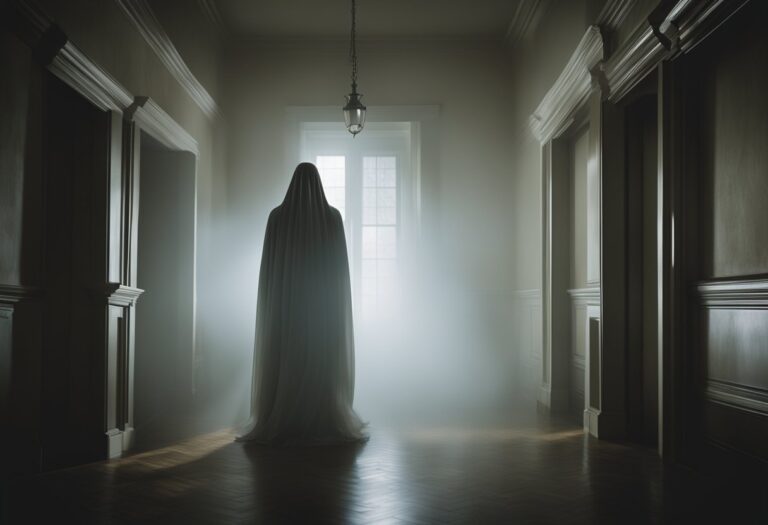Dreaming About Violence: Meanings And Interpretations
Dreaming about violence can be shocking and leave you with a lot of questions when you wake up. This article is here to help you understand what these intense dreams might mean.
Dreams can be a window into our emotions, fears, and things we’re dealing with in our lives. When violence shows up, it could be telling us about our struggles, conflicts, or even things we’re trying to fight against or stand up for.
Let’s look at some common interpretations and meanings behind dreams of violence to help make sense of what your mind might be working through.
Understanding Violent Dreams
If you have ever woken up from a violent dream feeling scared, confused, or even traumatized, you are not alone. Dreams can be a reflection of our subconscious thoughts and emotions, and violent dreams are no exception.
In this section, we will explore the psychological and neurological perspectives on violent dreams.
Psychological Perspectives
According to psychologists, violent dreams can be interpreted in a number of ways.
One interpretation is that they are a manifestation of our emotions, particularly anger and frustration. For example, if you have been feeling angry or frustrated about a situation in your waking life, you may have a violent dream as a way of processing those emotions.
Another interpretation is that violent dreams are a reflection of our fears and anxieties. If you are feeling anxious or fearful about something in your life, such as a job interview or a health issue, you may have a violent dream as a way of coping with those feelings.
Trauma can also play a role in violent dreams. If you have experienced a traumatic event, such as abuse or violence, you may have recurring violent dreams as a way of processing the trauma.
Neurological Insights
From a neurological perspective, violent dreams may be linked to certain disorders or imbalances in the brain.
For example, people with post-traumatic stress disorder (PTSD) may have more frequent and intense violent dreams than others.
Sleep disorders, such as parasomnia, can also contribute to violent dreams. Parasomnia is a sleep disorder that causes abnormal behaviors during sleep, such as sleepwalking or night terrors.
The biochemistry of the brain can also play a role in violent dreams. For example, imbalances in neurotransmitters such as serotonin and dopamine have been linked to violent behavior in some individuals.
Common Themes in Violent Dreams
Violent dreams can be unsettling and disturbing, leaving you feeling anxious and fearful upon waking up. However, understanding the common themes in violent dreams can help you make sense of the symbolism and hidden meanings behind them.
Being Chased or Attacked
One of the most common themes in violent dreams is being chased or attacked. In these dreams, you may be pursued by an unknown entity or a familiar person, and you may feel helpless and unable to escape.
This type of dream is often associated with feelings of anxiety, fear, and vulnerability.
Participating in Violence
Another common theme in violent dreams is participating in violence. In these dreams, you may find yourself engaging in physical altercations, such as fighting or killing.
This type of dream can be particularly distressing, as it may suggest repressed anger or aggression.
Witnessing Violence
Witnessing violence is also a common theme in violent dreams. In these dreams, you may observe violent acts being committed by others, such as war, murder, or torture.
This type of dream can be associated with feelings of powerlessness and helplessness.
It is important to note that the interpretation of violent dreams can vary depending on the individual’s personal experiences and cultural background.
For example, men may be more likely to dream about physical violence, while women may be more likely to dream about emotional violence. Children may have violent dreams related to fear of death or separation anxiety, while adults may have violent dreams related to stress or exposure to violent content.
Interpreting Violent Dreams

If you’re experiencing violent dreams, you may be wondering what they mean. In general, violent dreams can be interpreted in a variety of ways, and the meaning behind them can depend on a number of factors.
Symbolism and Metaphors
One way to interpret violent dreams is to look at the symbolism and metaphors used in the dream.
For example, if you dream about being attacked by a wild animal, this could be a metaphor for feeling threatened or overwhelmed in your waking life. Similarly, if you dream about being in a violent altercation with someone you know, this could be a symbol of a conflict or power struggle that you’re experiencing in your personal relationships.
Cultural and Personal Context
Another important factor to consider when interpreting violent dreams is your cultural and personal context.
For example, in some cultures, violent dreams are seen as a sign of impending danger or bad luck. In other cultures, violent dreams may be interpreted as a manifestation of repressed anger or other negative emotions.
Similarly, your personal experiences and memories can also play a role in the meaning behind your violent dreams.
If you have experienced trauma or violence in your past, this may be reflected in your dreams. Alternatively, if you have been exposed to violent media or news stories, this may also influence the content of your dreams.
Emotional and Physical Effects

Violent dreams can have both emotional and physical effects on your waking life. These effects can be both positive and negative, depending on how you choose to interpret them. In this section, we will explore some of the most common emotional and physical effects of violent dreams.
Stress and Anxiety
Stress and anxiety are two of the most common emotional effects of violent dreams. These dreams can leave you feeling tense and anxious, making it difficult to relax during the day.
If you are experiencing stress or anxiety as a result of your violent dreams, it is important to take steps to manage these feelings.
This might include talking to a friend or therapist, practicing relaxation techniques such as meditation or deep breathing, or engaging in physical activity to release pent-up energy.
Behavioral Changes
Violent dreams can also lead to behavioral changes in your waking life.
You may find yourself more irritable or aggressive than usual, or you may withdraw from social situations altogether.
It is important to be aware of these changes and to take steps to address them if they are causing problems in your life.
One way to address behavioral changes is to identify the underlying cause of your violent dreams.
For example, if you are experiencing stress or anxiety in your waking life, this may be contributing to your violent dreams. By addressing the root cause of your dreams, you may be able to reduce their frequency or intensity.
Another way to address behavioral changes is to practice self-care.
This might include getting enough sleep, eating a healthy diet, and engaging in regular exercise.
Violent Dreams as Warning Signs

If you regularly experience violent dreams, it could be a sign of an underlying issue that your mind is trying to bring to your attention. Violent dreams can be disturbing, but they can also be a warning sign of a mental health issue or a predictor of neurodegenerative disorders. In this section, we will explore the different ways that violent dreams can be interpreted as warning signs.
Indicators of Mental Health Issues
Violent dreams can be an indicator of mental health issues such as PTSD, depression, anxiety, and other mood disorders.
If you experience violent dreams on a regular basis, it may be worth speaking to a therapist or mental health professional to explore whether there are any underlying issues that need to be addressed.
There are many different reasons why someone might experience violent dreams as a result of a mental health issue.
For example, if you are experiencing anxiety, your mind may be processing your fears and concerns through your dreams. Alternatively, if you are experiencing depression, your mind may be processing feelings of sadness and hopelessness through your dreams.
Predictors of Neurodegenerative Disorders
In some cases, violent dreams can be a predictor of neurodegenerative disorders such as Parkinson’s disease, Lewy body dementia, and multiple system atrophy.
Studies have shown that people who experience violent dreams may be more likely to develop these disorders later in life.
If you are experiencing violent dreams on a regular basis and are concerned about the potential for neurodegenerative disorders, it may be worth speaking to a doctor or neurologist to explore whether there are any early warning signs that you should be aware of.
Recurring Violent Dreams

If you find yourself having recurring violent dreams, it can be a sign of unresolved issues or past trauma. These dreams may indicate suppressed emotions or intrusive thoughts that need to be addressed.
Dealing with Trauma
If you have experienced violence in your past, it is possible that your recurring violent dreams are a result of that trauma.
According to a study published in Drugs & Aging, violent dreams can be a sign of REM sleep behavior disorder, which may precede various neurological disorders including Parkinson’s disease, Lewy body dementia, and multiple system atrophy.
It is important to seek professional help if you have experienced trauma and are struggling with recurring violent dreams. A trained therapist can help you work through your trauma and address any underlying issues that may be contributing to your dreams.
Impact of Past Experiences
Recurring violent dreams can also be a result of past experiences with violence, even if you were not the victim. Exposure to violent media, such as movies or video games, can also contribute to the frequency and intensity of violent dreams.
It is important to be mindful of the media you consume and how it may be affecting your dreams. Consider taking a break from violent media and replacing it with calming activities such as meditation or reading.
Sleep Disorders and Violent Dreams
Sleep disorders can cause a wide range of symptoms, including nightmares and sleepwalking. In this section, we will explore two sleep disorders that are commonly associated with violent dreams: REM Sleep Behavior Disorder and Nightmare Disorder.
REM Sleep Behavior Disorder
REM Sleep Behavior Disorder (RBD) is a sleep disorder that causes people to act out their dreams while they are sleeping. During REM sleep, the muscles in your body are usually relaxed, which prevents you from acting out your dreams. However, in people with RBD, the muscles are not relaxed, which can cause them to move around, yell, or even punch and kick in their sleep.
The Mayo Clinic states that RBD is often associated with neurological conditions such as Parkinson’s disease and Lewy body dementia. If you are experiencing violent dreams and other symptoms of RBD, such as talking, laughing, or shouting in your sleep, it is important to speak to your doctor.
Nightmare Disorder
Nightmare Disorder is a sleep disorder that causes frequent, disturbing nightmares. These nightmares can be so vivid and realistic that they can cause you to wake up feeling scared, anxious, or upset. People with Nightmare Disorder often have trouble falling asleep and staying asleep because they are afraid of having another nightmare.
According to NOCD, persistent nightmares and violent dreams could potentially be a sign of Nightmare Disorder. If you are experiencing frequent bad dreams and are afraid to go to sleep, it is important to speak to your doctor.
Treatment and Coping Strategies
If you’re experiencing violent dreams, it’s essential to seek treatment and learn coping mechanisms to manage them.
Two Main Types of Treatment
There are two main types of treatment for violent dreams: professional therapy and self-help techniques.
Professional Therapy
A therapist can help you understand the root cause of your violent dreams and develop strategies to manage them. They can also diagnose and treat any underlying mental health conditions that may be contributing to the dreams, such as stress, anxiety, or depression.
Therapies that may be helpful for violent dreams include cognitive behavioural therapy (CBT), which can help you identify and change negative thought patterns and behaviours. Eye Movement Desensitisation and Reprocessing (EMDR) is another therapy that may be useful for those experiencing trauma-related dreams.
Medications may also be prescribed to help manage symptoms of anxiety and depression that may be contributing to violent dreams. However, it’s important to note that medication should only be used in conjunction with therapy and not as a standalone treatment.
Self-Help Techniques
There are several self-help techniques that you can use to manage violent dreams. These include:
- Keeping a dream journal: Writing down your dreams can help you identify patterns and triggers, which can then be addressed in therapy.
- Relaxation techniques: Engaging in calming activities before bed, such as meditation or deep breathing, can help reduce stress and anxiety, which may contribute to violent dreams.
- Imagery rehearsal therapy: This technique involves imagining a different, more positive outcome to a violent dream and rehearsing it in your mind. This can help reduce the frequency and intensity of the dreams.
It’s important to note that self-help techniques should be used in conjunction with professional therapy, as they are not a substitute for treatment.
Violent Dreams in Different Demographics
Dreams are a universal human experience, and violent dreams are no exception. However, the nature and frequency of violent dreams can vary depending on a person’s demographics. In this section, we will explore gender-specific patterns and age-related variations in violent dreams.
Gender-Specific Patterns
Research has shown that men tend to have more physical aggression in their dreams than women. This may be due to biological and cultural factors that influence the way men express aggression. However, women are more likely to have dreams that involve emotional aggression, such as verbal arguments or social exclusion.
Age-Related Variations
Children and adults also differ in their experience of violent dreams. Children tend to have more nightmares and night terrors, which can involve violent or scary content. These dreams may be related to their developing brains and heightened emotions.
On the other hand, older adults may have fewer violent dreams, as their sleep patterns and brain activity change with age. However, some older adults may experience violent dreams as a symptom of certain neurological disorders, such as Parkinson’s disease or Lewy body dementia.
Research and Theories
When it comes to violent dreams, scientific studies and theoretical interpretations have attempted to shed light on their meaning. This section will explore some of the research and theories that have been put forward.
Scientific Studies
Several scientific studies have been conducted to investigate the meaning of violent dreams.
For instance, a study published in Drugs & Aging found that violent dreams can be a sign of REM sleep behavior disorder, which may precede various neurological disorders including Parkinson’s disease, Lewy body dementia, and multiple system atrophy. Another study using the HVDC system suggested that men have more aggression, especially physical aggression, in their dreams than do women.
Theoretical Interpretations
Theories about the meaning of violent dreams have been put forward by several psychologists and researchers.
One such theory is that violent dreams are a way for the subconscious mind to release pent-up emotions and desires. According to this theory, the violent acts in the dream represent the dreamer’s repressed anger or frustration.
Another theory suggests that violent dreams may be a manifestation of the dreamer’s fears or anxieties. For example, someone who is afraid of being attacked may have violent dreams about being attacked. In this case, the violent act in the dream represents the dreamer’s fear.
Spiritual Meaning
In some cultures, dreams are believed to have spiritual meaning.
For instance, in ancient Egyptian culture, dreams were believed to be messages from the gods. Similarly, in some Native American cultures, dreams were believed to be a way for the spirit world to communicate with humans.
When it comes to violent dreams, some spiritual interpretations suggest that they may be a warning of impending danger. For example, a dream about being attacked may be interpreted as a sign that the dreamer needs to be vigilant and protect themselves from harm.
External Factors Influencing Violent Dreams
There are several external factors that can influence the occurrence of violent dreams. These factors can range from medication and substance use to environmental triggers and negative energy. Understanding these factors can help you identify the root cause of your violent dreams and take appropriate measures to address them.
Medication and Substance Use
Certain medications and substances can affect your brain chemistry and increase the likelihood of violent dreams.
For example, antidepressants, antipsychotics, and beta-blockers have all been associated with violent dreams. Similarly, alcohol and recreational drugs can also disrupt your sleep and lead to violent dreams.
If you are experiencing violent dreams and are taking medication or using substances, it is important to speak to your doctor or a mental health professional. They can help you determine if the medication or substance is the cause of your violent dreams and recommend alternative treatments.
Environmental Triggers
Environmental triggers can also play a role in the occurrence of violent dreams.
For example, exposure to violent media, such as movies or video games, can influence your dreams and lead to violent content. Similarly, stressful or traumatic events in your waking life can also trigger violent dreams.
To reduce the likelihood of violent dreams, it is important to create a peaceful and calming environment before you go to bed. This can include avoiding violent media, practicing relaxation techniques, and addressing any unresolved stress or trauma in your waking life.
Violent Dreams and Physical Health
If you have ever woken up from a violent dream, you might wonder what it means for your physical health. Research has shown that violent dreams can be linked to various physical conditions, including Parkinson’s disease, Lewy body dementia, and multiple system atrophy.
Links to Physical Conditions
A 2011 study published in Drugs & Aging found that violent dreams can be a sign of REM sleep behavior disorder, which may precede various neurological disorders including Parkinson’s disease, Lewy body dementia, and multiple system atrophy. REM sleep behavior disorder occurs when the normal paralysis that occurs during REM sleep is impaired, leading to physical movements during sleep.
In addition to neurological disorders, violent dreams can also be associated with other physical conditions.
For example, a study published in the journal Sleep found that people with obstructive sleep apnea were more likely to have violent dreams. Obstructive sleep apnea is a condition where the airway becomes blocked during sleep, leading to pauses in breathing and disrupted sleep.
Brain Health and Injury
Violent dreams can also be a sign of brain injury or damage.
For example, a study published in the journal Brain Injury found that people who had suffered a traumatic brain injury were more likely to experience violent dreams. Traumatic brain injury can cause damage to the brain’s structures and functions, leading to changes in sleep patterns and dream content.
It is important to note that not all violent dreams are linked to physical health conditions. In some cases, violent dreams may simply be a result of stress, anxiety, or other psychological factors. However, if you are experiencing frequent violent dreams or have concerns about your physical health, it is important to speak with a healthcare professional.
Spiritual and Alternative Views
Spiritual Meanings
In many spiritual traditions, dreams are believed to be a window into the subconscious mind and can offer insight into one’s spiritual journey.
Violent dreams are no exception and are often seen as a sign of inner turmoil or conflict. Extremely violent dreams can represent “a spiritual battle between good and evil, light and darkness, or God and the devil.” In this context, the dreamer may be facing a spiritual crisis or undergoing a spiritual transformation.
Friendly or sexual violence in dreams can also have spiritual significance.
For example, friendly violence in dreams can indicate the need for greater assertiveness in one’s waking life, while sexual violence can represent repressed sexual desires or a need for greater intimacy.
Alternative Interpretations
While many spiritual traditions view violent dreams as having symbolic meaning, others interpret them more literally.
For example, violent dreams can be a sign of anxiety or feelings of being trapped. In this context, the dreamer may benefit from exploring the underlying causes of their anxiety or seeking help from a mental health professional.
It’s worth noting that not all violent dreams have a deeper meaning. Sometimes, they may simply be a result of external stimuli, such as watching a violent movie or playing a violent video game before bed. In these cases, the dreamer may benefit from limiting exposure to violent media before bedtime.
Prevention and Lifestyle Changes
If you frequently experience violent dreams, there are some lifestyle changes you can make to help prevent them.
Sleep Hygiene
Maintaining good sleep hygiene is key to preventing violent dreams.
This includes establishing a consistent sleep schedule and creating a relaxing sleep environment. Avoiding caffeine and alcohol before bed can also help improve the quality of your sleep. Additionally, you can try relaxation techniques such as meditation or deep breathing exercises before going to bed to help calm your mind and reduce stress.
Bedtime Routine
Establishing a calming bedtime routine can also help reduce the likelihood of violent dreams.
Activities such as taking a warm bath, reading a book, or listening to soothing music can help relax your mind and prepare your body for sleep. Avoiding stimulating activities, such as watching TV or using electronic devices, before bed can also help prevent violent dreams.
Stress Management
Stress and anxiety are common triggers for violent dreams. Finding healthy ways to manage stress can help reduce the frequency of these dreams.
Exercise is a great way to relieve stress and promote better sleep. You can also try journaling or talking to a therapist to help manage your stress levels.
Making these lifestyle changes can take time, but they are worth it if you want to reduce the frequency of violent dreams. By prioritizing good sleep hygiene and stress management, you can improve your overall health and well-being.
Violent Dreams in Literature and Media
Violent dreams have been a recurring theme in literature and media for centuries. They have been depicted in various forms of art, film, and literature, often representing the darker aspects of the human psyche.
Representation in Popular Culture
Violent dreams have been a popular theme in horror movies and TV shows. They are often used to create suspense and fear in the audience, as they represent a primal fear of violence and death.
For example, in the movie “A Nightmare on Elm Street,” the main character is haunted by a serial killer who attacks his victims in their dreams. This representation of violent dreams has become a staple in horror movies and has influenced the way we perceive and interpret our own dreams.
Violent dreams have also been used in literature to explore the darker aspects of the human psyche. In “Macbeth” by William Shakespeare, the main character is tormented by violent dreams after he murders King Duncan. These dreams represent his guilt and the psychological toll that his actions have taken on his mind.
Similarly, in “Heart of Darkness” by Joseph Conrad, the main character experiences violent dreams as he journeys into the heart of Africa, representing the darkness that lies within the human soul.
Influence on Art and Storytelling
The representation of violent dreams in popular culture has had a significant influence on art and storytelling. Many artists and writers have used the theme of violent dreams to explore the human psyche and the darker aspects of the human experience.
For example, the artist Salvador Dali was known for his surrealistic paintings, which often depicted violent and disturbing dreamscapes. Similarly, the writer Franz Kafka explored the theme of violent dreams in his works, such as “The Metamorphosis,” which depicts a man who wakes up one day to find that he has transformed into a giant insect.
Historical Perspective on Violent Dreams
Dreams have fascinated humans for centuries, and violent dreams have been a topic of interest since ancient times. The interpretation of dreams has changed over time, from being seen as messages from gods to being viewed as a reflection of one’s subconscious mind.
Ancient Interpretations
In ancient times, dreams were seen as messages from the gods, and violent dreams were believed to be a warning of impending danger. In some cultures, such as the ancient Greeks and Romans, dreams were thought to be prophetic, and they were often interpreted by priests and oracles.
In other cultures, such as the Native Americans, dreams were seen as a way to connect with the spirit world.
In many ancient cultures, dreams were also believed to have healing powers. In Egypt, for example, the god Serapis was believed to appear in dreams to heal the sick. The ancient Greeks also believed that dreams had healing properties, and they would often visit dream temples to seek guidance from the gods.
Evolution of Dream Analysis
The interpretation of dreams has evolved over time, and today, violent dreams are often seen as a reflection of one’s subconscious mind.
Sigmund Freud, the founder of psychoanalysis, believed that dreams were a way to access the unconscious mind, and that violent dreams were a manifestation of repressed anger and aggression.
Carl Jung, another influential figure in dream analysis, believed that dreams were a way to connect with the collective unconscious, a shared reservoir of human experience and knowledge. Jung believed that violent dreams were a reflection of the shadow self, the part of the psyche that contains repressed emotions and desires.
In modern times, dream analysis has become a popular tool for self-reflection and personal growth. Many people keep dream journals to track their dreams and gain insight into their subconscious mind. Some psychologists also use dream analysis as a therapeutic tool to help patients work through emotional issues.







